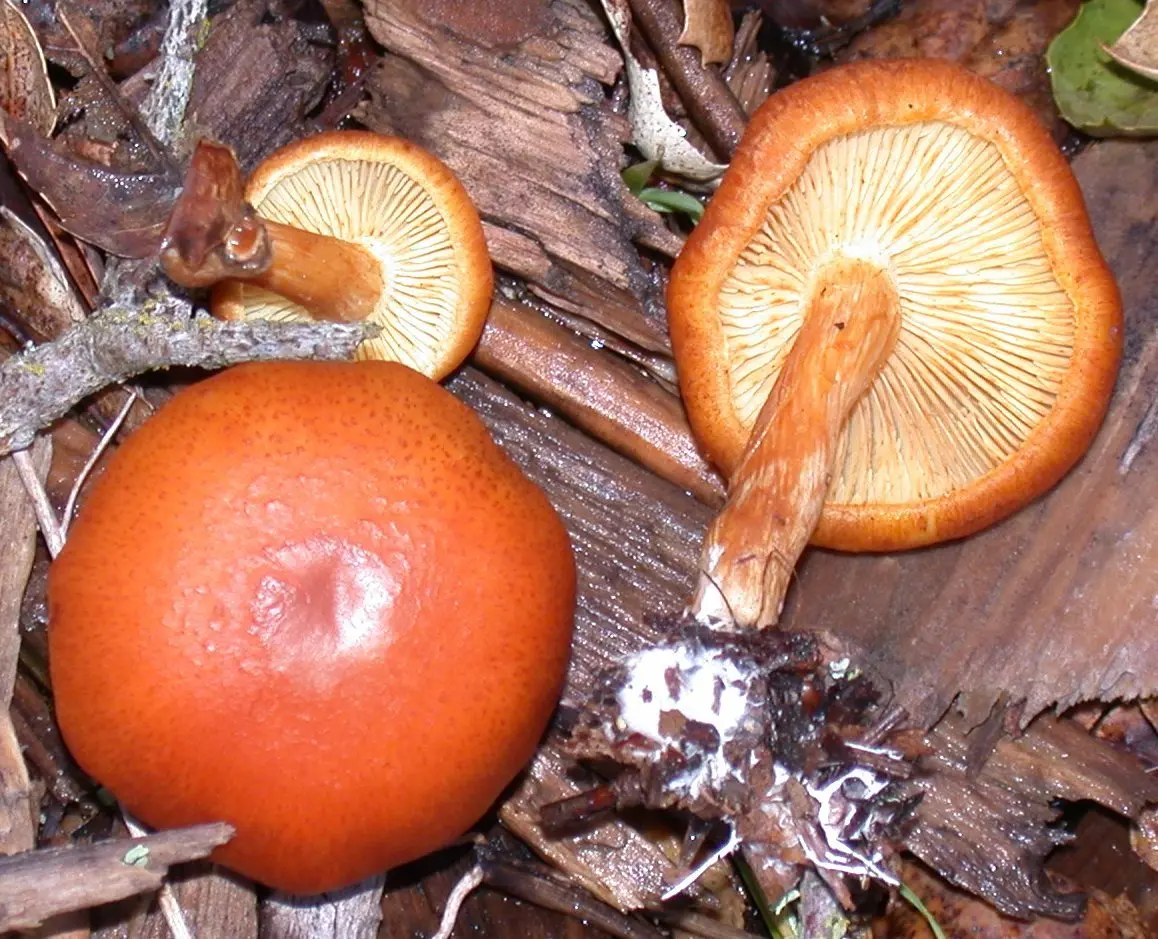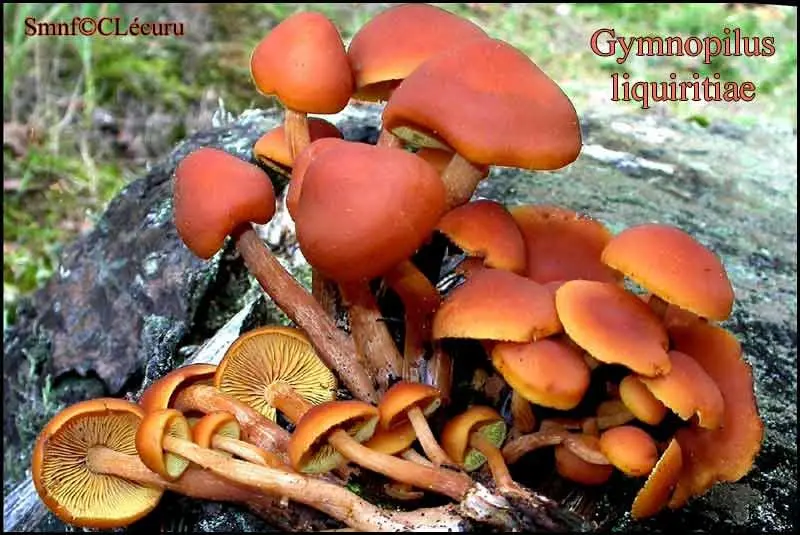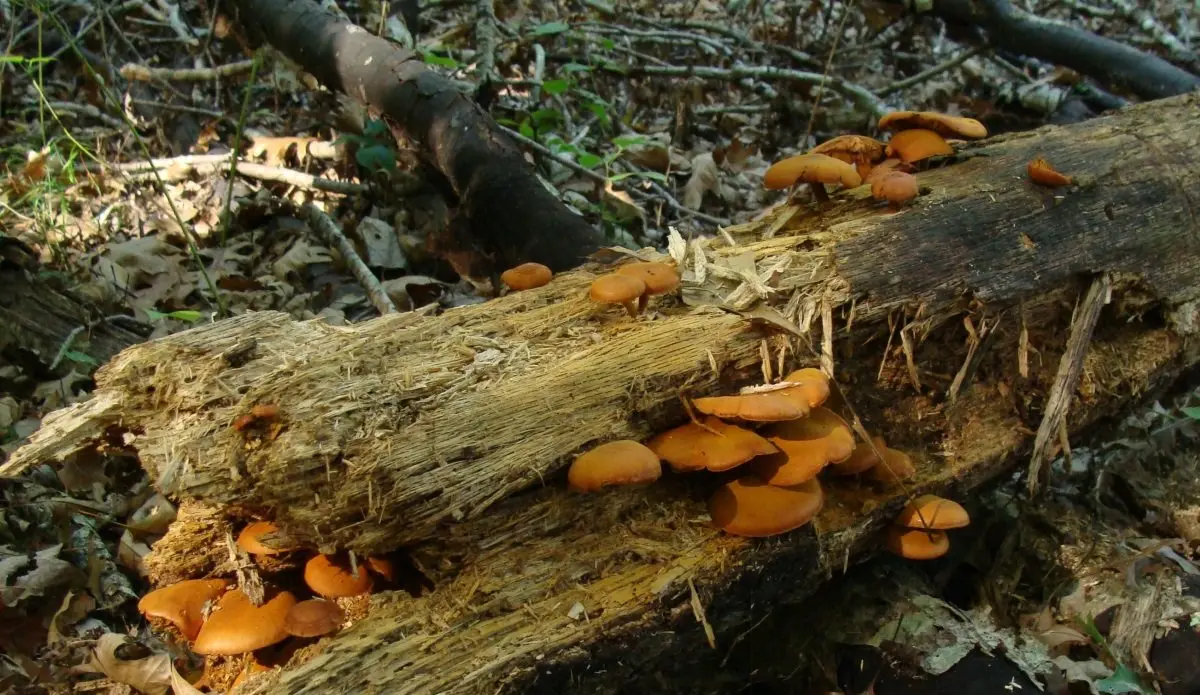Gymnopilus disappearing (Gymnopilus liquiritiae)
- Division: Basidiomycota (Basidiomycetes)
- Subdivision: Agaricomycotina (Agaricomycetes)
- Class: Agaricomycetes (Agaricomycetes)
- Subclass: Agaricomycetidae (Agaricomycetes)
- Order: Agaricales (Agaric or Lamellar)
- Family: Hymenogastraceae (Hymenogaster)
- Genus: Gymnopilus (Gymnopil)
- Type: Gymnopilus liquiritiae (Vanishing Gymnopilus)

Gymnopylus vanishing belongs to the genus Gymnopylus, family Strophariaceae.
The mushroom cap is 2 to 8 cm in diameter. When the mushroom is still young, its cap has a convex shape, but over time it acquires a flat-convex and almost flat appearance, sometimes has a tubercle in the center. The cap of this mushroom can be both dry and wet, it is almost smooth to the touch, it can be yellow-orange or yellow-brown.
The pulp of the disappearing hymnopil has a yellowish or reddish color, while it has a bitter taste and a pleasant smell, similar to potato.
The hymenophore of this fungus is lamellar, and the plates themselves are either adherent or notched. Plates are frequent. In a young hymnopile of the disappearing hymnopile, the plates are ocher or reddish, but with age they acquire an orange or brownish color, sometimes mushrooms with brownish spots are found.

The leg of this fungus is from 3 to 7 cm in length, and its thickness reaches from 0,3 to 1 cm. light shade at the top.
As for the ring, this fungus does not have it.
The spore powder has a rusty-brown color. And the spores themselves are ellipsoid in shape, moreover, they are covered with warts.
The toxic properties of hymnopil disappearing have not been studied.

The habitat of the fungus is North America. Gymnopile vanishes usually grows singly or in small groups, mainly on rotting wood among coniferous, sometimes broad-leaved, tree species.
Similar to the vanishing hymnopile is Gymnopilus rufosquamulosus, but it differs in the presence of a brownish cap, which is covered with small reddish or orange scales, as well as the presence of a ring located in the upper part of the leg.









